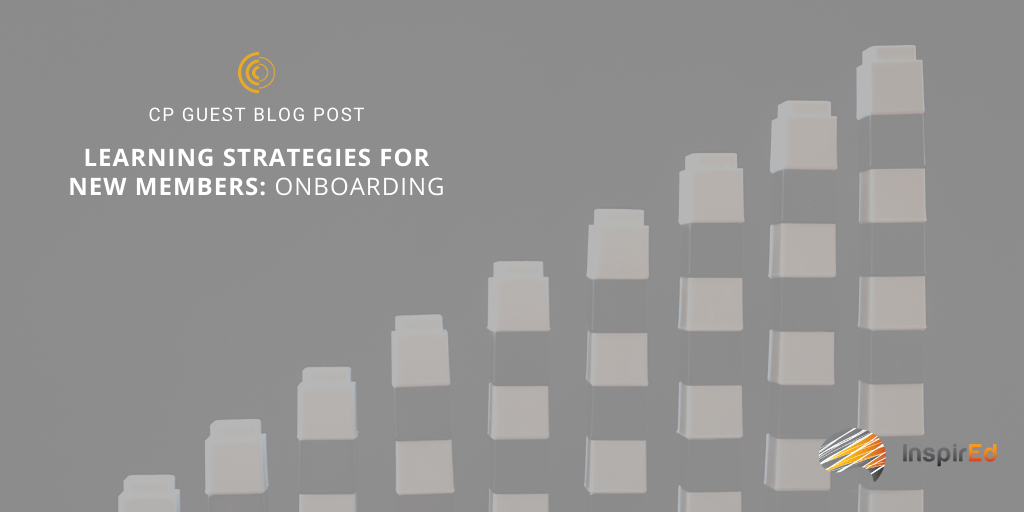
by Julie Ratcliffe | Sep 17, 2020 | Blog
This is a guest post written by Tracy King, CAE. As CEO of InspirEd, Tracy King leverages her more than 20 years in workforce development consulting with organizations on education strategy and learning design. Tracy is the author of Competitive Advantage: Create Continuing Education that is Profitable, Sustainable and Impactful, and she advises on how to grow reliably profitable and sustainable continuing education programs that transform learners. Tracy specializes in the intersection of learning science and technology. She’s a thought leader, invited speaker, master learning designer and DELP Scholar. Her work has been featured on NBC, ABC, FOX, USA Today, The Star Tribune and hundreds of nationally-syndicated television, newspaper, and magazine outlets. Tracy is a contributor to Microlearning in the Digital Age: The Design and Delivery of Learning in Snippets forthcoming by Routledge, Taylor & Francis group.
Meeting this moment has inspired so many organizations to embrace virtual and digital learning to connect with members and constituents in new ways. While the appetite for innovation is whet, consider these ideas for attracting and engaging new members.
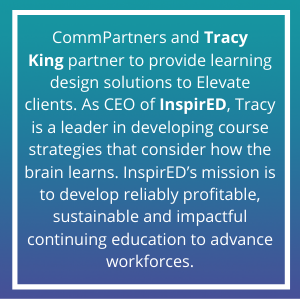
While the membership packet of old has seen several upgrades, now is the perfect time to leverage your LMS for exciting opportunities to connect new members to all you offer. Online member onboarding is timely not only for our current virtually mediated moment but popular with younger professionals who want to explore – and revisit – resources at their point of need. Live webinars are not typically the best format when Zoomed-out professionals are looking for excuses to decline screen meetings.
Consider creating a choose-your-own-adventure style onboarding in your LMS aligning your organization’s services with new members’ greatest needs. Steer clear of bullet-list descriptions and lengthy presentations and instead opt for mobile-friendly storytelling. Collect brief member videos, each representing a constituency in your membership, as well as highlighting one key value proposition that tells the story of your association’s character and relevance. We really want our new members to see themselves in these stories, so they are inspired to engage. Next, present your benefits as answers to challenges, creating clear and clickable access to get started. Finally, showcase how new members can find a home within the network of professionals you represent. Consider how you can ensure a new member receives a personal, colleague-member outreach call or an invitation to a networking event, even if that’s a live chat in your LMS or texting with a Board Member within the first month of membership to welcome them to the community.
One more tip: Always recommend a next step. Each learning opportunity should end with a call to action to join you in another program.
Wins
-
Introduce your organization immediately upon member sign up – no waiting for the next webinar orientation presentation
-
Easily accessible point of need member resources giving new members a comfortable launch pad for exploring all you offer
-
A natural introduction to all the member-only goodies in your LMS
It doesn’t stop here. Tracy will be back next month with the next step in her learning strategies for new membership. Be sure to catch part two of this post next month, Learning Strategies for New Members: Microcredentialing.
If you’re interested in transforming your learning design, contact Tracy at info@inspired-ed.com. If you’re interested in Elevate LMS or in onboarding strategies for Elevate LMS, contact Meghan Gowen at mgowen@commpartners.com.
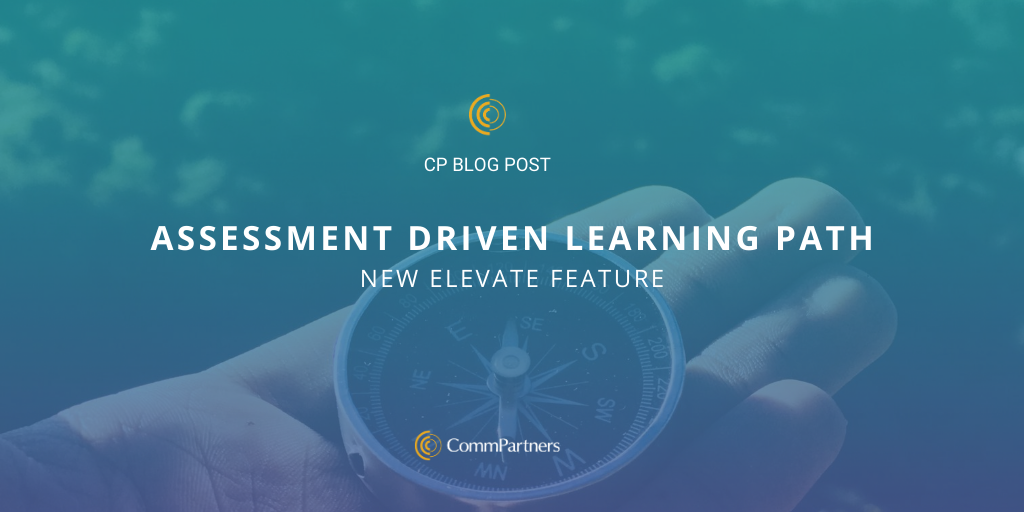
by Julie Ratcliffe | Sep 3, 2020 | Blog, Education, News
Learners, meet your new advisor. Elevate admins can now make personalized content recommendations to learners through a Self-Assessment Quiz. The assessment gauges a learners’ knowledge of specific focus areas or quiz categories. Upon completing the assessment, the learner is presented with a list of asset recommendations designed to improve their knowledge level within each focus area. Lower scores will offer learners beginner-level courses, and higher scores will offer more advanced courses.
As the learner completes the recommended products, they are encouraged to repeat the quiz to identify areas they have improved in and target where they still need to continue their journey based on their scores.
This is a great onboarding tool for new members to gauge a baseline in certain competencies while helping them sift through your association’s extensive learning catalog. It’s not limited to just new members, anyone learning a new skill can take a quiz to receive individualized attention, “introduce the quiz at any time as a tool to provide a more nuanced and personalized learning experience for end-users,” says Eve Finstein, Elevate Implementation Manager.
To learn how to set up a Self-Assessment Quiz, click here. If you’re interested in learning how to integrate learning path strategies into your LMS or more about Elevate, contact Meghan Gowen at mgowen@commpartners.com.
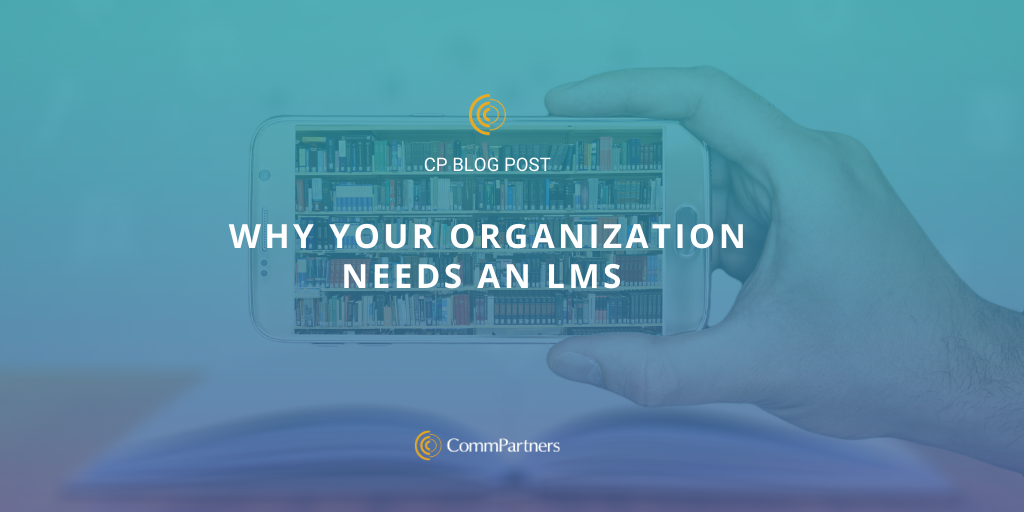
by Julie Ratcliffe | Jul 14, 2020 | Blog
A Learning Management System, or LMS, is software designed for online training, tracking, and reporting that supports content creation and storage for continued learning. An LMS provides your organization or association an opportunity to create a learning community on an eLearning platform. Sound like something that would benefit your membership?
Knowing some advantages of an LMS can help your Development Team determine if an LMS is a right fit for your organization:
-
-
- Create Customized Learning Paths: Create a customized learning journey for each of your members using curated content stored in your LMS. Each pathway can be adjusted as a member’s role within the organization grows and changes.
- Avoid Skill Gaps: Skill gaps are the abilities a new hire might not bring to the table, but the position requires or would benefit from it. Offer training and courses to membership that creates a well-rounded professional and encourages continued learning.
- Doubles as an Event Platform: An LMS can serve as an event platform. Host relevant webinars or a Town Hall once a month. Take it a step further and host your next conference virtually through your LMS.
- Develop an On-Demand Learning Catalog: As your learning community grows, your resources will grow. All the content from previous events can be repurposed and reused. Upload podcasts, relevant media links, anything you think your learners will benefit from. Soon you will have a robust catalog of knowledge within your LMS to draw and learn from at any time.
- Measure Performance: Track and report the performance of members to watch growth, target weak points, and acknowledge achievements.
- Onboard Members: Create learning paths for membership onboarding, so each new member is familiar with organization culture and procedures.
- Certification Opportunities: Allow members to keep up with professional certifications easily.
- Reach Membership Virtually: For organizations with wide-spread membership, an LMS provides a way to reach each learner. An LMS prepares your organization for online learning.
When considering an LMS for your organization, do your research. Understand you are creating a knowledge community for your organization while reaching membership in a new way. To find out more about CommPartners’ LMS, Elevate, click here or contact Meghan Gowen, VP of Client Development at mgowen@commpartners.com.
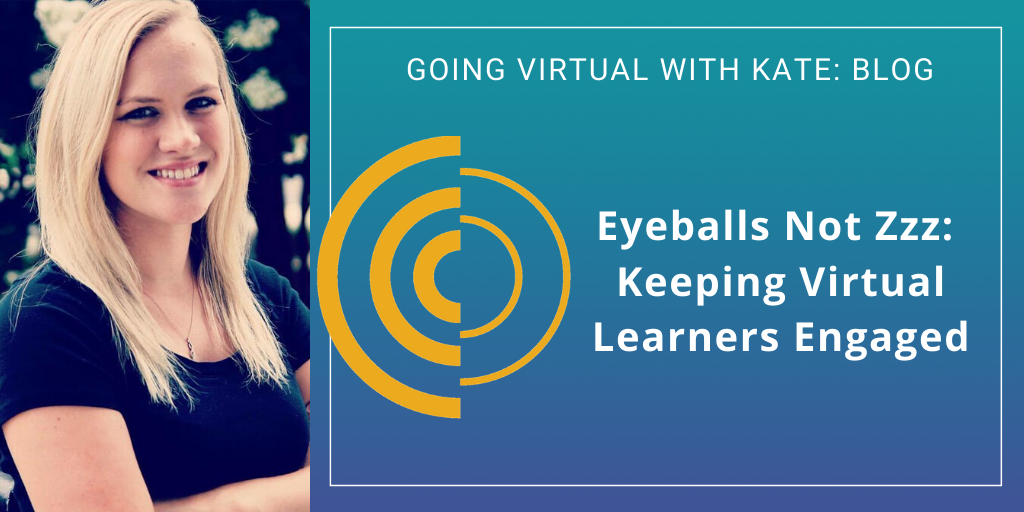
by Julie Ratcliffe | May 14, 2020 | Blog, FaceBook Live
Keeping your learners attention during a Virtual Conference or a Webinar can be a challenge. You had an awesome, 3-day conference planned with all these great activities to make your event interactive, but now you’re forced to go virtual. Attendees who were once going to be bright, shining faces right in front of you, are now faceless figures behind a screen. Are they paying attention to the presenters, or are they scrolling through Instagram? Or are they taking a Buzzfeed quiz to find out which Mamma Mia song fits their personality?
Tracy King, CEO and Chief Learning Strategist of InspirEd, has tips to ensure you’re getting eyes and ears during your virtual eLearning event and not daydreamers.
Session Lengths and Breaks
Even if your learners typically work from home, a Virtual Conference can be a very different learning experience, “consuming content through a screen is fatiguing, and it’s a space we are not used to attending and focusing [on],” says Tracy. Design your sessions with your learners in mind, so your event doesn’t feel like an endurance marathon. When determining session length, consider learning outcomes and the medium, but generally, Virtual Conference sessions should be short about 30-45 minutes. If you plan to go longer, make sure you include interaction (more on that later) and breaks.
Breaks are essential. Presenters and learners need time to stretch, check email, grab a snack/drink, and the ever-necessary bio break. They won’t want to miss a single second of the stellar programming you lined up. To make sure you are giving your learners enough breaks, follow Tracy’s lead:
- 90 minute session = 5 minute break
- Half-day sessions = 15 minute breaks every 90 minutes
Let your learners know when to expect breaks and when exactly they start and stop. Stick to those times. Do not let stragglers derail your conference agenda. If the break is 10 minutes, begin promptly after those 10 minutes are up.
If you’re still unsure of how to design your session, Tracy suggests following the 10×10 Rule: 10 minutes of content and 10 minutes of interaction. The idea is not to be regimented and constantly alternating but for equal parts presentation to equal parts interaction. Speaking of interaction…
Make it Interactive
Don’t shy away from interactivity just because your conference is virtual. Depending on the platform you chose to use for your conference, there may be a host of tools for you to make session hands-on. CommPartners integrates with Zoom, which features tools like a chatbox, whiteboard, Q&A, and polling. These tools can be used as ice breakers, but they should be used to advance learning as well, says Tracy:
- Use the whiteboard in small groups for collaborative projects.
- Poll learners to gauge opinions.
- Facilitate discussion and reflection in the chatbox.
Within CommPartners’ Elevate LMS, or Learning Management System, there are opportunities to make the website interactive for learners:
- Include discussion boards to facilitate conversation, include industry experts as discussion moderators.
- Embed a welcome video introducing your learners to the conference. Make it interactive by giving them a fun task to complete, like asking them to comment where they are joining from on the discussion board.
- If your conference has an Exhibit Hall, utilize chat features so exhibitors and attendees can converse at a booth.
- Create a site scavenger hunt to encourage your learners to explore the whole website, directing them to important features. The winners can receive a prize!
Put the Net in Networking
One aspect of conferences that attendees look forward to the most is the opportunity to network and socialize with other industry professionals. Just because your conference has switched to a virtual platform doesn’t mean the opportunity has to go away. Take advantage of the popular Virtual Happy Hours. Try focusing each Happy Hour around a specific topic, profession, or a previous session so they don’t become overwhelming with too many participants.
Another way to keep the conversation going is to add specific discussion boards or chat rooms to your website specifically dedicated to networking and socializing. Direct your learners to those areas of your website during downtime in the schedule or after learning has taken place. Learners are welcome to take their conversations offline, away from the conference as well.
Going virtual doesn’t mean you need to throw everything you have planned out the window. It is an opportunity to get creative with the tools and the platform you’ve selected. Your learners registered for your conference, ready to consume your quality content, which has not changed. Following these tips will make your learners comfortable, keeping them engaged for the length of the conference.
Click here for more information
For more information about how to engage your learners, contact marketing@commpartners.com. Learn more about education strategy and learning design as well as find Tracy King at inspired-ed.com.
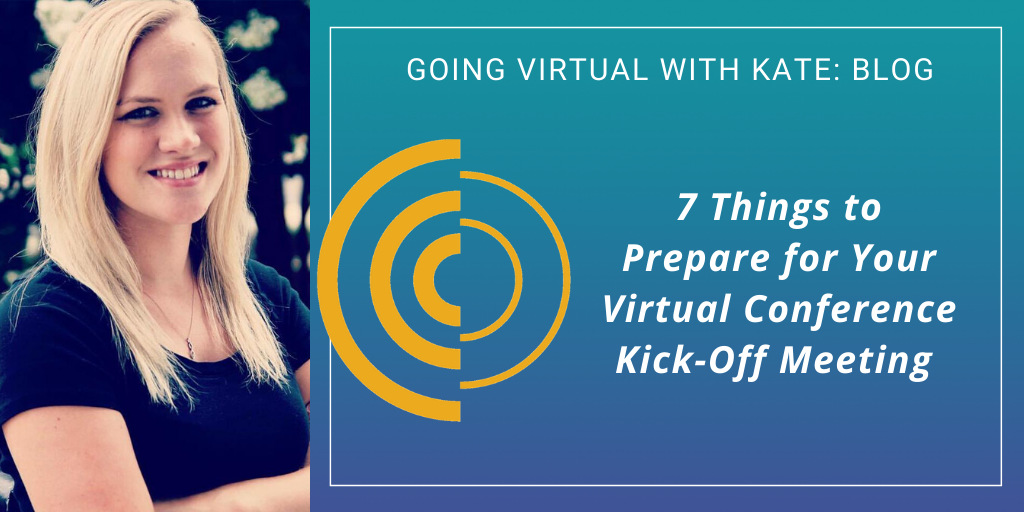
by Julie Ratcliffe | Apr 30, 2020 | Blog, FaceBook Live
One of the first steps in hosting a Virtual Conference with CommPartners is to meet with a Project Manager for a kick-off call. You likely went over some details during the sales call, but now will you dive more in-depth with your producer to take your conference to the next level. To ensure this process is as smooth as possible and production gets started without a hitch, here are a few things you can prepare for this meeting.
What are the dates of your conference?
You have probably established this information by the time you have spoken with the sales team and signed a contract, but if you have reached this point and have not set dates, expect that it will slow things down.
What do you want your conference website to look like?
Elevate clients can create a completely customized conference website. Having an idea of what you’d like your site to look like will speed the creation process up. Here are some things to consider:
- Will you use a sub-domain name of your website or will you use CommPartners’ domain name?
- Will you create an entirely new design theme or base it off your main site?
- What Elevate features and widgets will you include?
- What will your page navigation look like?
You should also be prepared to share files of your color palettes, logos, and any other images associated with your organization that you’ll want to include on your site. CommPartners is happy to help with any questions regarding your conference site environment, but for a truly custom look, arrive at the meeting with a prepared vision or idea.
How do you plan to handle registration?
Decide if your organization is going to process registration internally or if registration is going through the Elevate website. Both are possible, but your producer will need to know at the onset if registration is going through Elevate. The registration process will need to be built-in to the site and time may need to be added to the production timeline.
What does your agenda look like?
At this point, you should have a timeline prepared for your conference. Details about speakers and the sessions are not necessary, but your Project Manager needs to know when each session is happening, including breaks. They need to know you have left enough time for your learners to go from session to session plus take any necessary breaks.
At an in-person conference, learners have a certain amount of time to arrive at their next session. They have time to mingle in the hall or read the literature posted around the conference. There are also plenty of breaks built into the schedule for meals, to get water, go to the bathroom, and check email. Include breaks in your virtual conference agenda, as your virtual learners are doing the same things. They need to take personal breaks, look for the next session on the conference website, or address any technical difficulties they may have. They may also experience fatigue from online learning. Most are not accustomed to learning in this way and need breaks from the screen. Be sure that you include enough breaks in your schedule to accommodate the needs of your learners.
What is your session format?
Once you have you have a clear picture of what your agenda will look like, it is helpful to know what format your sessions will take. You have many options to choose from, will your speakers use just webcams? Slides and audio? A combination? Will some sessions be pre-produced? This can be a more in-depth discussion with your Project Manager at the meeting, but be prepared to tell them your expected attendance for the conference. It will help them choose the right format for your sessions.
Will you include sponsors?
Virtual Conferences offer several monetization options, and sponsorship is one of them. Be ready to let your Project Manager know what’s been sold to sponsors and at what level. Will there be sponsor videos or will your sponsors be introducing sessions? Are you including a Virtual Exhibit Hall?
A Virtual Exhibit Hall is home on your conference site for all the resources a sponsor can distribute to attendees. In each “exhibit booth,” the sponsor can upload PDFs, videos, company descriptions and links, and other assets. The exhibit hall will be open 24/7 – giving sponsors the opportunity for constant exposure.
Be creative when thinking of ways to include sponsors and be sure to prepare a list of participating sponsors for your Project Manager.
Will you include post-conference/session actions?
Finally, decide upfront if attendees are receiving items like credit, certificates, or evaluations after they have completed something at your conference. You then need to determine if they will receive them after each session or after the whole conference has concluded. If there is anything else attendees should receive after a session or the conference, now is the time to alert your Project Manager. These are actions that must be built-in into the site during the early stages.
By considering all of these questions before your first meeting with your Virtual Conference Project Manager, you not only save them time, you also save you and your team time. It will eliminate the amount of back-and-forth that usually occurs when trying to coordinate an event like this and advances the production timeline.
If you have any questions about your first kick-off meeting or would like to speak a sales representative, click here:
Contact Meghan Gowan, VP of Client Development at
mgowen@commpartners.com.







